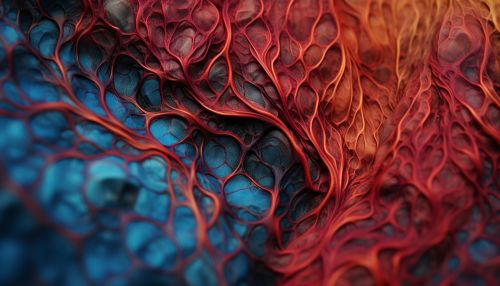Cardiac Tissue Engineering
Introduction
Cardiac tissue engineering is a branch of tissue engineering that focuses on the creation and manipulation of cardiac tissues. This field combines principles from biology, chemistry, and engineering to study and develop methods for repairing damaged heart tissue, creating artificial heart tissue for transplantation, and modeling heart diseases for drug testing.


Background
The heart is a complex organ composed of multiple cell types, including cardiomyocytes, fibroblasts, endothelial cells, and smooth muscle cells. These cells work together to ensure the heart's proper function. However, when the heart is damaged due to conditions such as myocardial infarction, the affected cells often die and are replaced by non-contractile scar tissue, leading to heart failure. Traditional treatments for heart failure, such as drug therapy and heart transplantation, have limitations. Therefore, cardiac tissue engineering emerged as a potential solution to these challenges.
Techniques in Cardiac Tissue Engineering
Cell Source
The first step in cardiac tissue engineering is to select a suitable cell source. This can include primary cells, such as cardiomyocytes and fibroblasts, or stem cells, such as embryonic stem cells (ESCs), induced pluripotent stem cells (iPSCs), and mesenchymal stem cells (MSCs). Each cell type has its advantages and disadvantages, and the choice depends on the specific application.
Scaffold Design
The next step is to design a scaffold that can support the growth and organization of the chosen cells. This scaffold can be made from natural materials, such as collagen and fibrin, or synthetic materials, such as polyglycolic acid (PGA) and polylactic acid (PLA). The scaffold must be biocompatible, biodegradable, and have suitable mechanical properties.
Cell Seeding and Culture
Once the scaffold is prepared, the cells are seeded onto it and cultured in a suitable environment. This process often involves the use of bioreactors, which provide the necessary nutrients, oxygen, and mechanical stimuli to the cells.
Maturation and Functional Assessment
After the cells have grown and organized into a tissue-like structure, the engineered cardiac tissue must be matured and functionally assessed. This can involve electrical stimulation to promote contractile function, as well as various assays to assess cell viability, gene expression, and tissue structure.
Applications
Cardiac tissue engineering has a wide range of potential applications, including heart repair, heart transplantation, and drug testing.
Heart Repair
One of the main goals of cardiac tissue engineering is to repair damaged heart tissue. This can be achieved by implanting engineered cardiac tissue into the damaged area of the heart, where it can integrate with the surrounding tissue and restore heart function.
Heart Transplantation
Another potential application is the creation of whole hearts for transplantation. While this is currently beyond the capabilities of current technology, advances in scaffold design and bioprinting technology may make this a reality in the future.
Drug Testing
Engineered cardiac tissues can also be used to model heart diseases and test new drugs. This could reduce the need for animal testing and improve the accuracy of drug testing.
Challenges and Future Directions
Despite the promise of cardiac tissue engineering, there are still many challenges to overcome. These include the need for better methods of cell sourcing, scaffold design, and tissue maturation, as well as the need for more effective strategies for integrating engineered cardiac tissue with the host heart. However, with continued research and development, cardiac tissue engineering has the potential to revolutionize the treatment of heart disease.
